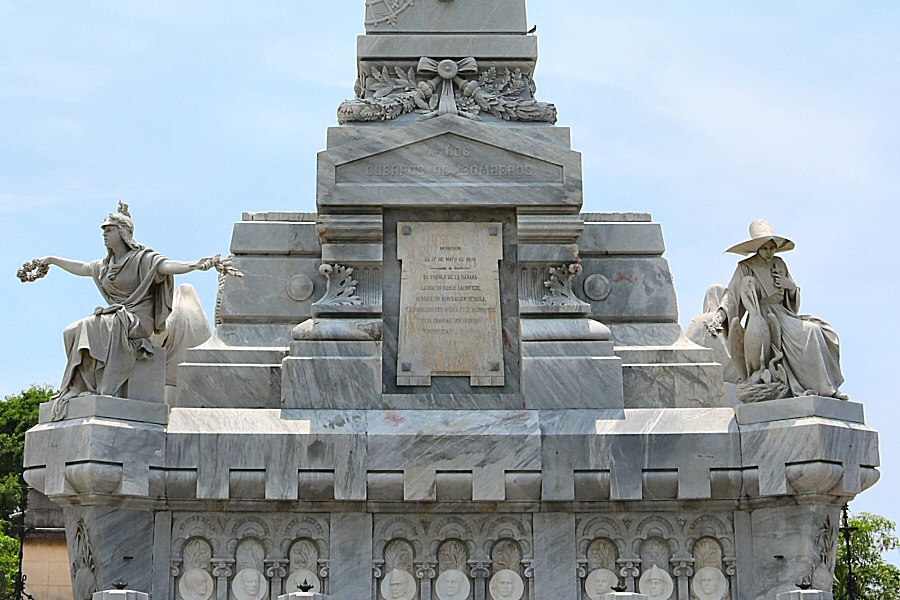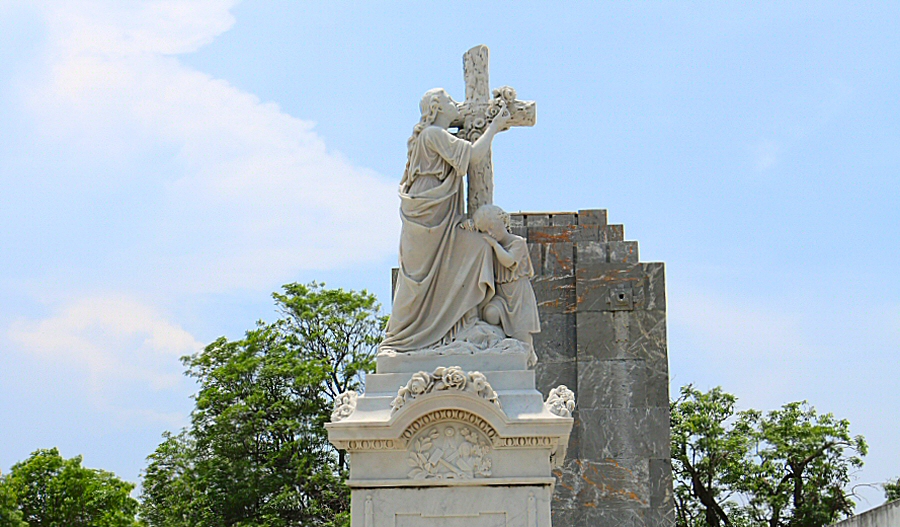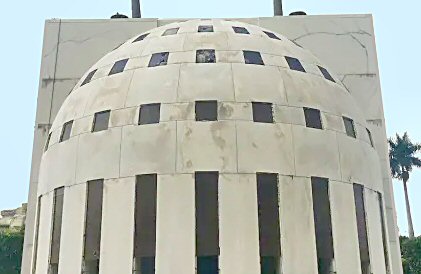
The 10-meters high sculptural set the
Monumento a los Bomberos (Firemen’s Monument) can be seen even
from the main entrance. The expressive monument was built by the
by Spanish sculptor Agustín Querol Subirats and architect Julio
Martinez Zapata in the memoriam to the tragic event in that the
28 firemen died in the fire of a hardware shop in 1890, when
they were doing their heroic work. The winged angel of Faith
carries a fainted fireman on her arms, while four feminine
figures surround the grave, representing the Abnegation, the
Pain, the Heroism, and the Martyrdom (the photo below).

The Capilla del Amor (Chapel of Love) is another place that is visited by many. It was built by Juan Pedro Baró for his beloved wife Catalina Laza.
The Pantheon of the Prelates, constructed for Bishop Espada, and the tomb of José Raúl Capablanca y Grauper, the legendary Cuban world chess champion from 1921 to 1927, are the other graves that draw attention. A majestic statue of a king in marble, sculpted by Florencio Gelabert, stands on the tomb of the latter.
The only vertical tomb of the cemetery
belongs to Eugenio Casimiro Rodríguez that was sentenced to life
imprisonment in 1918. However, he was pardoned, when he married
the daughter of the president. He became a politician and died
as a wealthy man. Before dying, he spoke his last will to be
buried on foot in a vertical niche.
Jeannette Ford Ryder is
an American that arrived in Cuba to found the charitable group
Bando de Piedad to help the poor and the homeless and to protect
the orphans and the domestic animals. When she died, her
faithful puppy Rinti waited at the feet of the stone sarcophagus
and rejected the food and the water offered by the caretakers of
the cemetery. Soon, it died of starvation. It was buried there
at the feet of its owner. The sculpture of the puppy on the
Tumba de la fidelidad (Loyalty Tomb) is the work the Cuban
sculptor Fernando Boada
But probably the most visited grave in the
cemetery is the tomb of Amelia Goyri de Hoz (Amelia Francisca de
Sales Adelaida Ramona Goyri y de la Hoz), a high-society lady,
that is known as La Milagrosa (the Miraculuos). She died of
preeclampsia in the eight month of gestation in 1901 and buried
according the Spanish custom with her stillborn baby at her feet
in a luxurious bronze coffin in the tomb of his husbands friend.
Her husband José Vicent Adot y Rahell used
to visit her tomb every day for 40 years until his death. He was
knocking the grave three times to wake her, talking to her while
keeping his hand over the grave.
When his friend, the Cuban sculptor José
Vilalta de Saavedra, heard the sad story, he sculpted a
life-size Carrara marble statue of Amelia, when he was in
Italy, and sent it to Cuba in 1909. This sculpture that now
decorates the tomb, represents a young woman that is carrying a
child in one arm and holding a cross in the other. The cross
refers to May 3rd, the day of death of Amelia, that is also the
Day of the Holy Cross according the Catholics.
When his father died, José waned to bury
him in the same tomb. When the tomb was opened in 1914, it was
seen that the corpse of Amelia was intact and the dead child was
in her arms instead of in the middle of her legs. Since that
time, she became a myth. Her grave is visited by childless women
that pray here in the hope of a pregnancy, as Amelia is believed
to symbolize the eternal hope.. Others ask her for a solution
for the difficulties that they pose during their pregnancy. All
these women know the ritual: they knock three times on the
tombstone before touching the tomb, request a wish and withdraw
slowly without turning their back on the tomb, when they leave.
The only tomb with Swedish red quarry
granite houses the remains of the Cardinal Manuel Arteaga.
In the central area of the cemetery, there
are two mausoleums that look like medieval fortresses. One of
them that belongs to Nicolás Rivero y Muñiz, Count of Rivero,
depicts a bronze sculpture of a warrior with helmet and shield
on the top of the tomb. It is the royal representation of the
nobleman in the Middle Ages.

 Catalina
Lasa, one of the most beautiful women in Havana in the first
decade of the 20th century, stood out for her big blue eyes,
mother-of-pearl skin and sculptural beauty of her body in
Havana's high society.
Catalina
Lasa, one of the most beautiful women in Havana in the first
decade of the 20th century, stood out for her big blue eyes,
mother-of-pearl skin and sculptural beauty of her body in
Havana's high society.